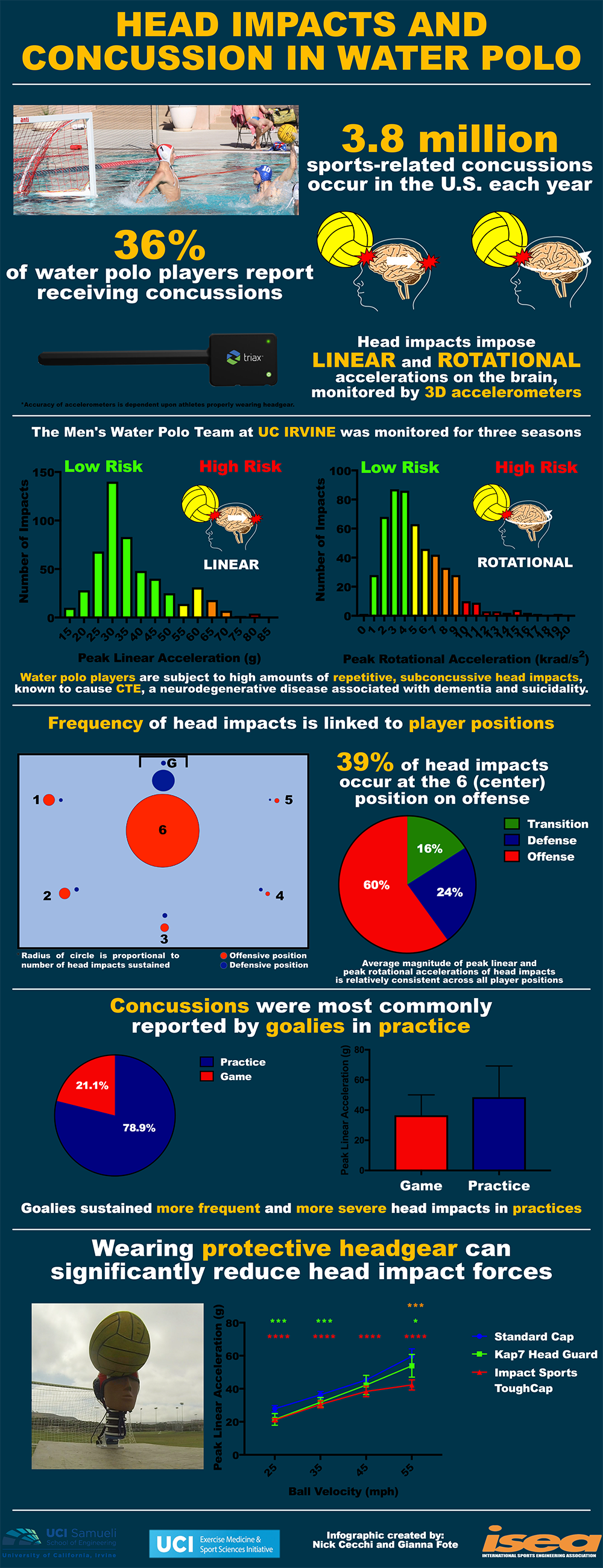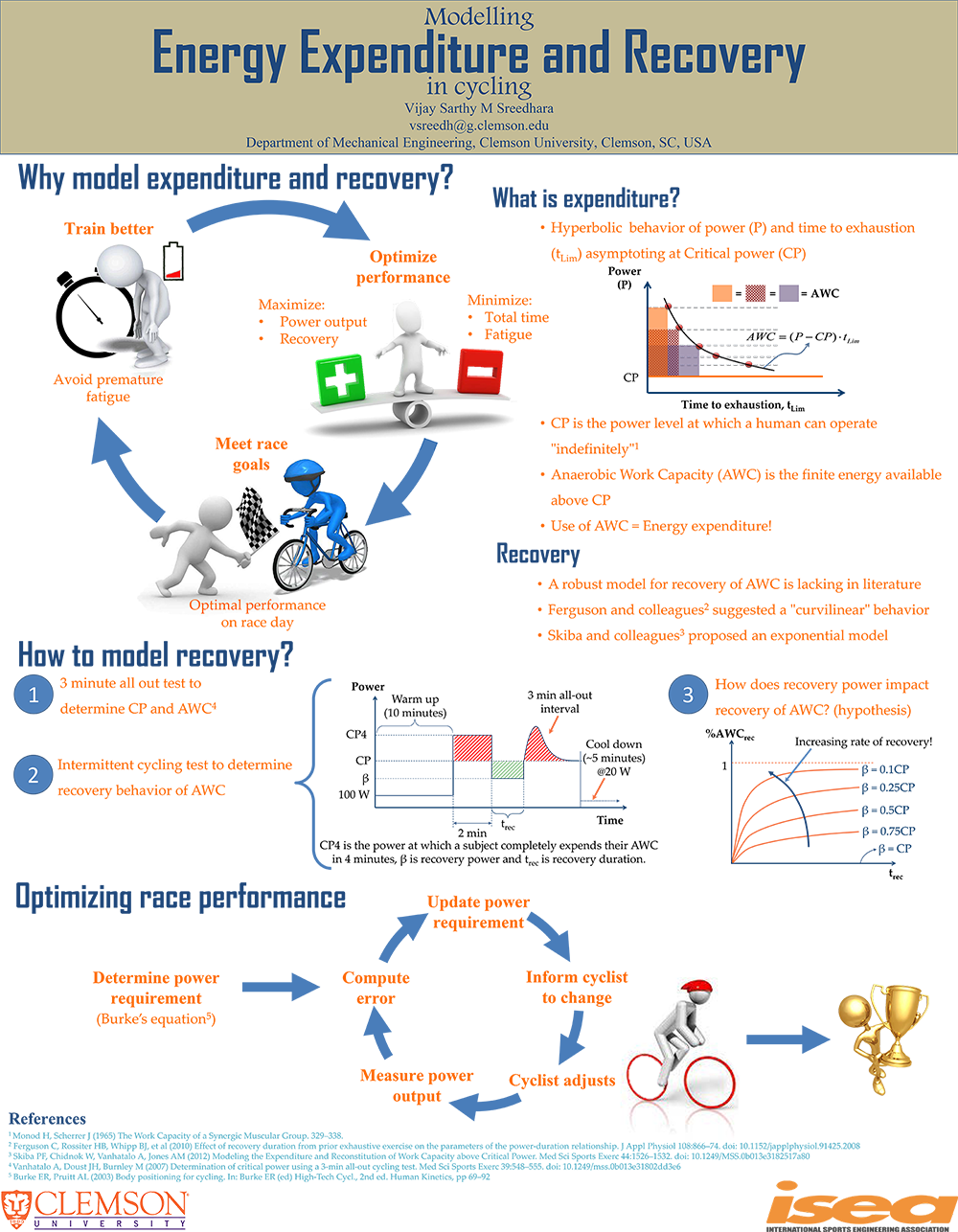Announcing the winners of the student project competition 2017
Many congratulations to this years winners.
1st Dougie Mann (Imperial College London, UK)

2nd Nick Cecchi & Gianna Fote (University of California, Irvine, USA)

3rd Vijay Sreedhara (Clemson University, USA)

The prizes are:
1st – £1000 and full membership for 2018
2nd – £500 (shared) and full membership for 2018 (each)
3rd – full membership for 2018
Many thanks for all the submissions this year.
Sports Materials in Applied Sciences
ISEA 2017 STUDENT PROJECT COMPETITION
ISEA Student Project Competition 2016 – Results
First prize was awarded to Marco Reijne from Delft University of Technology for his project on ‘The next level in pole vaulting: A mechanical model based on exploration’.
Second prize was awarded to Biem Wibbens from Delft University of Technology for his project on ‘The design of field hockey sticks’.
Congratulations to both Marco and Biem!
We received a high number of excellent projects this year which were a great reflection on the quality of sports engineering education around the world. The judges enjoyed reading the wide range of project areas that were submitted and thank you once again to all the applicants.
Olympic Research! Student Member Brock Laschowski
While completing his Masters of Science at the University of Western Ontario in Canada, Brock Laschowski worked alongside the Canadian Sport Institute Ontario and Rowing Canada Aviron to study how the mechanical properties of different oar shafts effect rowing biomechanics. This research was conducted under the supervision of Dr. Volker Nolte, and was partially funded by the Natural Sciences and Engineering Research Council of Canada. Laschowski and Nolte recently published their findings in some of the leading sports engineering journals. These novel investigations involved both experimental [link] and model-based [link] approaches. Notably, their on-water experiments involved National and World Champion Rowers. Nolte is currently working at the Rio Olympics with Team Canada, while Laschowski eagerly watches the fruits of his labor from afar.
ISEA 2016 SPORTS ENGINEERING STUDENT PROJECT COMPETITION
ISEA Student Project Competition 2015 – Results
First prize was awarded to Davide Zampiere from University of Padova for his project on ‘Fabrication and mechanical testing of auxetic foam for sport safety applications’.
Second prize was awarded to Brock Laschowski from University of Western Ontario for his project on ‘The effects of oar-shaft stiffness and length of rowing biomechanics’.
Congratulations to both Davide and Brock!
The judges were very impressed with the quality of all the projects we received this year; they were a great reflection of the high standard of sports engineering work undertaken by our members at the moment. Thank you to all applicants.
isea2016 – Call for abstracts
ISEA2016 – THE ENGINEERING OF SPORT11
Date: 11 – 14 July, 2016
Conference Location: Delft University of Technology, The Netherlands
Conference Chair: Prof. Dr. Frans van der Helm
The 11th conference of the International Sports Engineering Association will take place in Delft from 11-14 July, 2016. The conference program provides the conferees the opportunity to learn from inspiring keynote speakers via lectures, parallel sessions, poster presentations and networking sessions.
CALL FOR ABSTRACTS
You are encouraged to submit a 1-page abstract ( max. 350 words) before October 1st, 2015 on any of the following topics:
- Aero- and hydrodynamics (including fluid mechanics)
- Biomechanics, materials and human material interaction (including sports equipment mechanics, sport products innovation)
- Measurement, feedback and simulation
- Motivation and persuasion to compete in sports, play and exercise
- Sports infrastructure and facilities (including sports surfaces)
Abstracts should briefly outline the main research question(s), research method, results and conclusions as well as their general significance. References might be added. Upon review of the abstracts, notification of acceptance will be made by December 1st, 2015 (complete papers due February 1st, 2016).
The abstract should be written in English following the ISEA2016 template which can be found here.
For all information, please visit www.isea2016.com or contact the Conference Secretariat at ISEA2016@tudelft.nl
Prof.dr. F.C.T. van der Helm – Head of Local Organising Committee
Routledge publish a new book “The Science of Engineering and Sports Surfaces”
Routledge have recently published a new book, “The Science of Engineering and Sports Surfaces”, Eds. Sharon Dixon, Paul Fleming, Iain James and Matt Carre. This draws together the latest research on biomedical, medical and engineering approaches to the study of sports surfaces. It will be of interest to all ISEA members working in this field. More information can be found a at: http://www.routledge.com/books/details/9780415500920